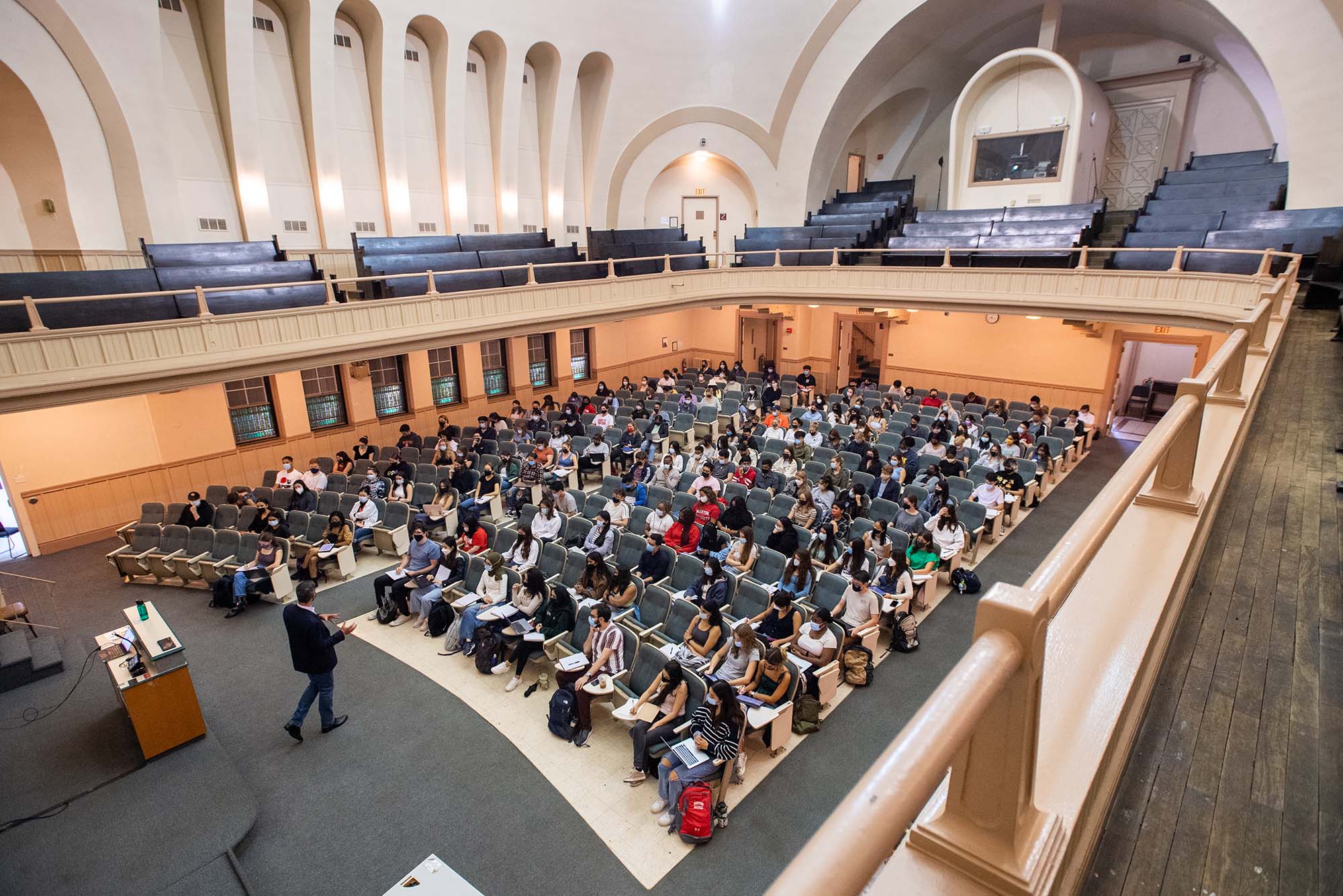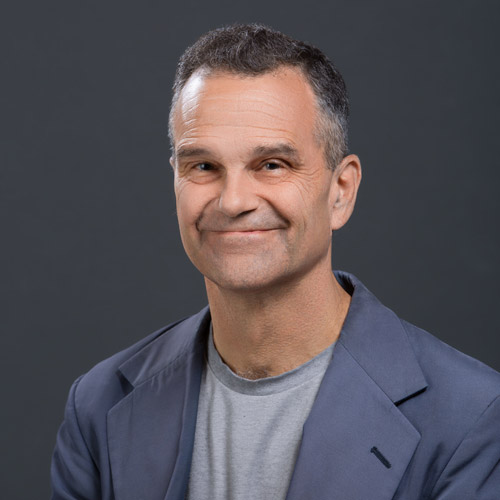BU’s Mask and Vaccination Mandates Prevented Spread of COVID in Classes, Research Finds

BU’s Mask and Vaccination Mandates Prevented Spread of COVID in Classes, Research Finds
Study confirms that the campus safely repopulated in fall 2021
Masks in classrooms last fall, as in Uwe Beffert’s cell biology class, helped avert a COVID-19 outbreak on campus, a School of Medicine study says. Photo by Cydney Scott
Some Boston University employees and students feared a COVID-19 outbreak might follow the return to in-person learning in fall 2021. But a new study of the University’s 33,000 students across 140,000 class meetings found that BU’s classroom mask mandate and vaccination requirements for students and employees kept the virus at bay and the community safe.
“Going back to full-occupancy, in-person teaching…did not lead to SARS-CoV-2 transmission in class,” says John Connor, a BU School of Medicine associate professor of microbiology and a research faculty member at the University’s National Emerging Infectious Diseases Laboratories. Connor was a coauthor of the study, published this week in the online JAMA Network Open.
BU and the Boston University Genome Science Institute funded the research, which used surveillance testing, epidemiology, and analysis of the virus’ genome to determine likely transmission in the class meetings.
“This study provides solid evidence that the disease mitigation events used by BU limited transmission in the classroom, something teachers and students everywhere would want to know,” Connor says. The researchers shared their work with the national Council of State and Territorial Epidemiologists.
BU discontinued its classroom mask mandate in May, while still requiring masks on the BU Shuttle and in all healthcare settings. “We still encourage anyone who is at risk for severe disease to wear a high-quality, well-fitted mask in crowded places,” says Hannah Landsberg (Sargent’13, SPH’13), associate director of Student Health Services, who participated in the JAMA study.
Connor discussed the findings with The Brink.
Q&A
With John Connor
The Brink: What time period did your study cover, and where did you get data on COVID infection rates—from the University’s Healthway Dashboard?
Connor: We focused on a time period between September 2021 and December 2021. This was the time period where classes were meeting. The data on SARS-CoV-2 rtPCR positivity [rtPCR is one of the most accurate methods for detecting and tracking the coronavirus] was provided by the BU Central Testing Laboratory (CTL). The lab at the time was doing tremendous work, processing thousands of samples a day to find individuals who had an on-campus presence and had become infected. You are right, the data was also shared widely through the University’s Healthway Dashboard.
The Brink: BU this summer discontinued its mask mandate policy in classes, though its vax-and-one-booster requirement remains. Does the study offer insights into how the University should proceed?
Connor: I don’t think our study indicates what will happen when there is no mask mandate. I do think that the no-mask policy is a natural progression. The University went from Learn from Anywhere to in-class with masking and vaccination successfully. I think we are testing the hypothesis that transmission in a classroom with vaccinated individuals will be low. If that appears to be not true, then I think moving back to in-class masking looks like a straightforward way to try to dampen transmission. I am not suggesting that masking is like putting on an Iron Man suit, merely that it is likely to help.
The Brink: Is it your sense that most US universities have a classroom masking policy similar to BU’s this summer? If so, given the contagiousness of the current variants, is the country risking another surge in cases?
Connor: My only answer to whether current variants will drive another surge in cases is to say: we will find out. There has been a fall-winter surge in 2020 and 2021.
I do want to emphasize that this study was only possible through strategic support from BU and the all-for-one collaborative spirit displayed by all the teams involved. The ability to do the study in the detail that we describe was possible only because there were three separate but integrated groups that meshed their different datasets to examine the question of whether there was in-class transmission. Without the herculean efforts of Healthway and contact tracing, making sense of the mountain of person-interaction data would have been impossible. Without the day and night effort of the CTL to identify samples that were rtPCR positive for SARS-CoV-2, catalog them, and share them with my group, we would not have had the opportunity to sequence the viral genome from those samples and compare them to assess transmission on a molecular level.

Comments & Discussion
Boston University moderates comments to facilitate an informed, substantive, civil conversation. Abusive, profane, self-promotional, misleading, incoherent or off-topic comments will be rejected. Moderators are staffed during regular business hours (EST) and can only accept comments written in English. Statistics or facts must include a citation or a link to the citation.